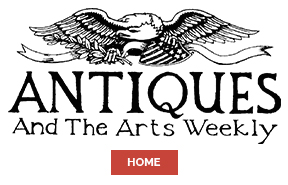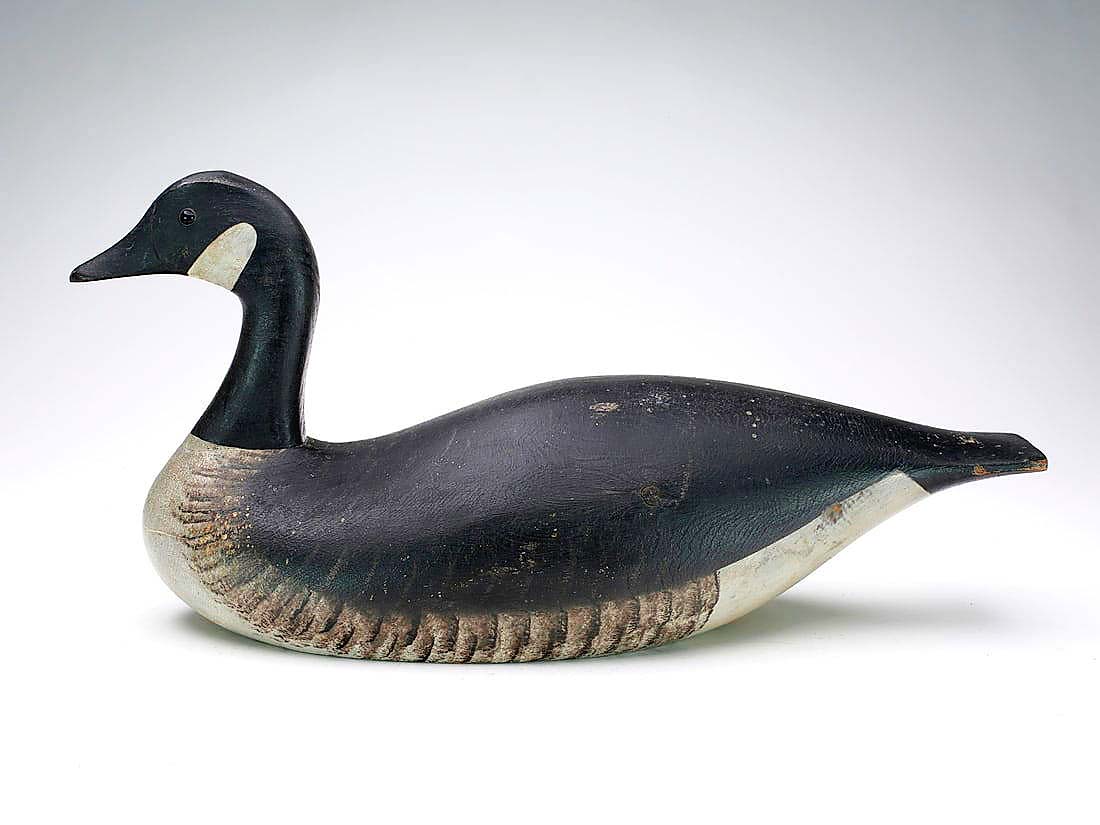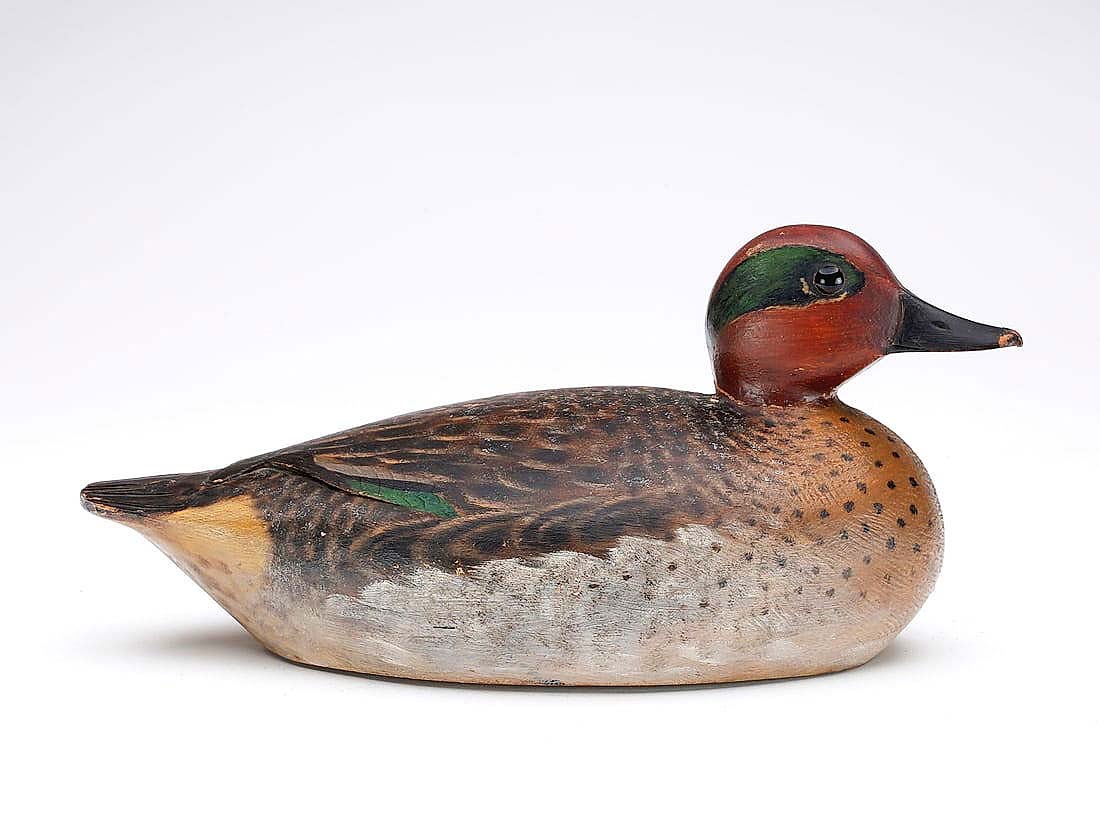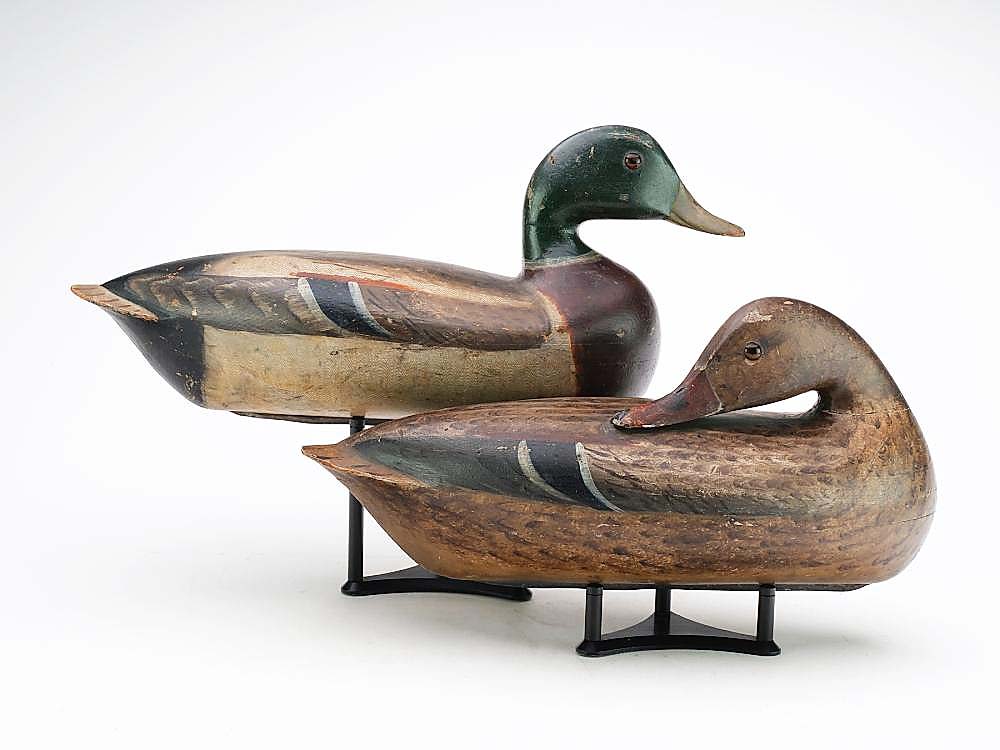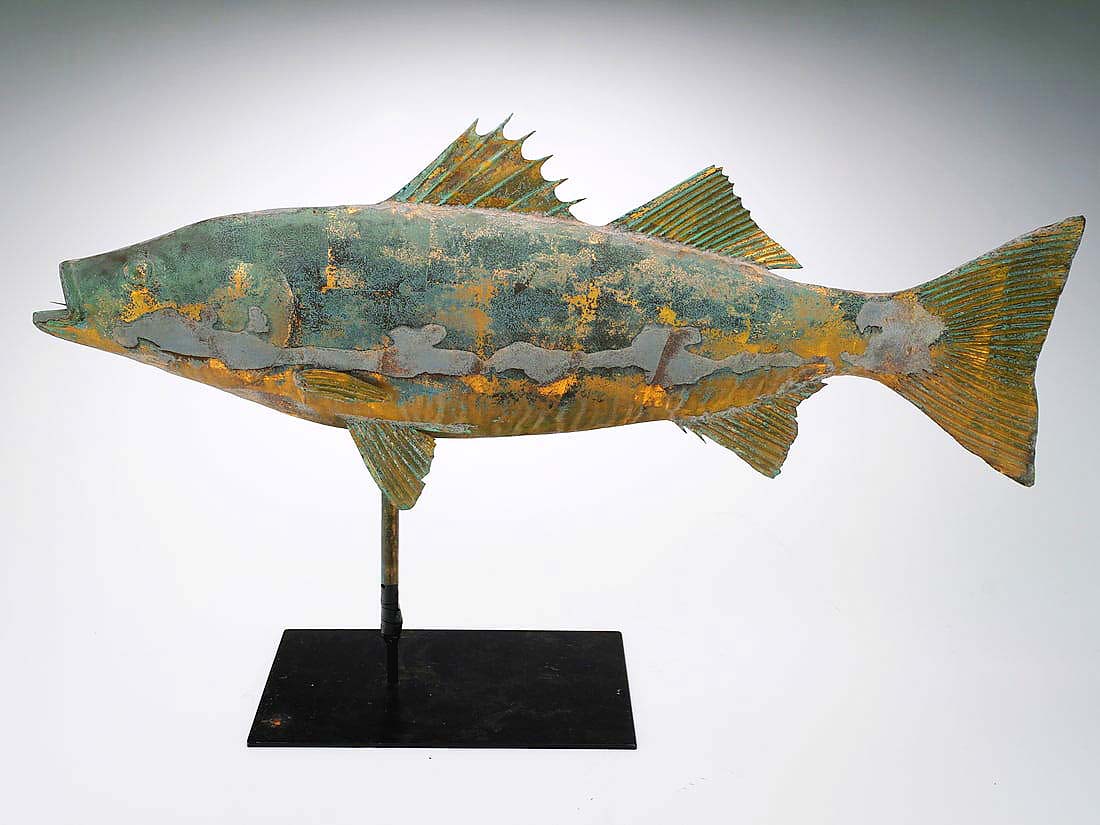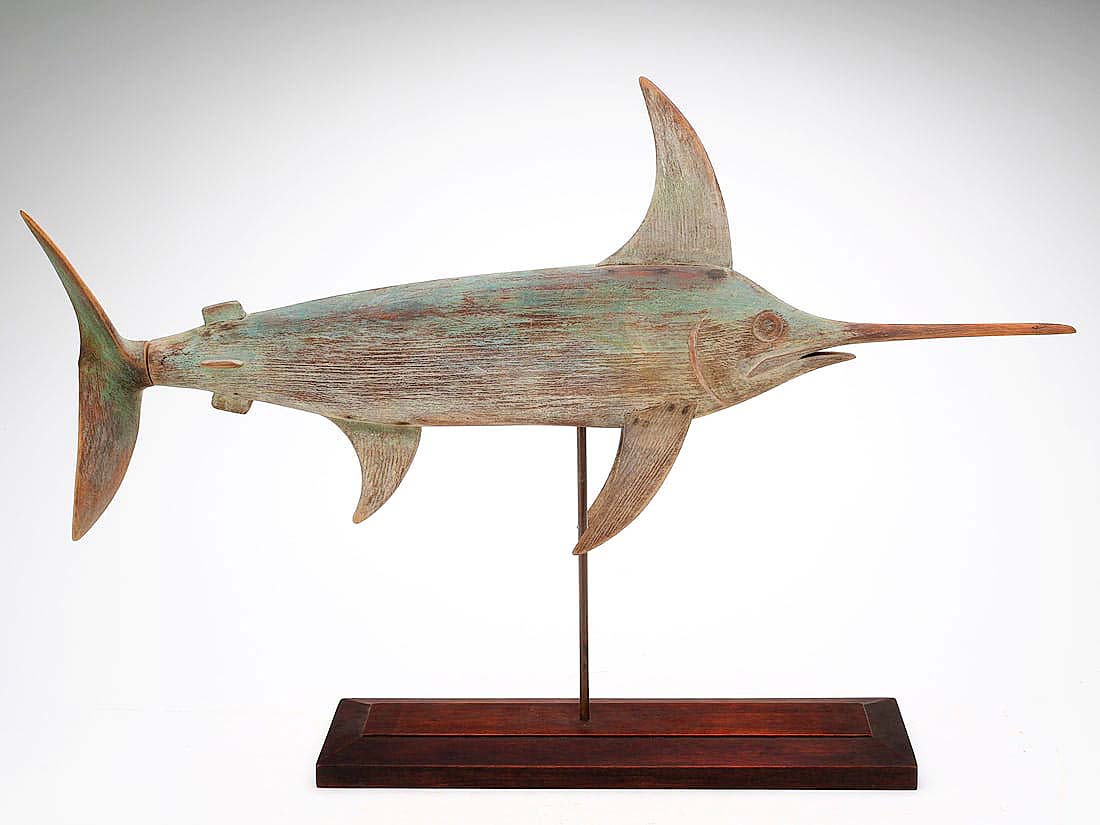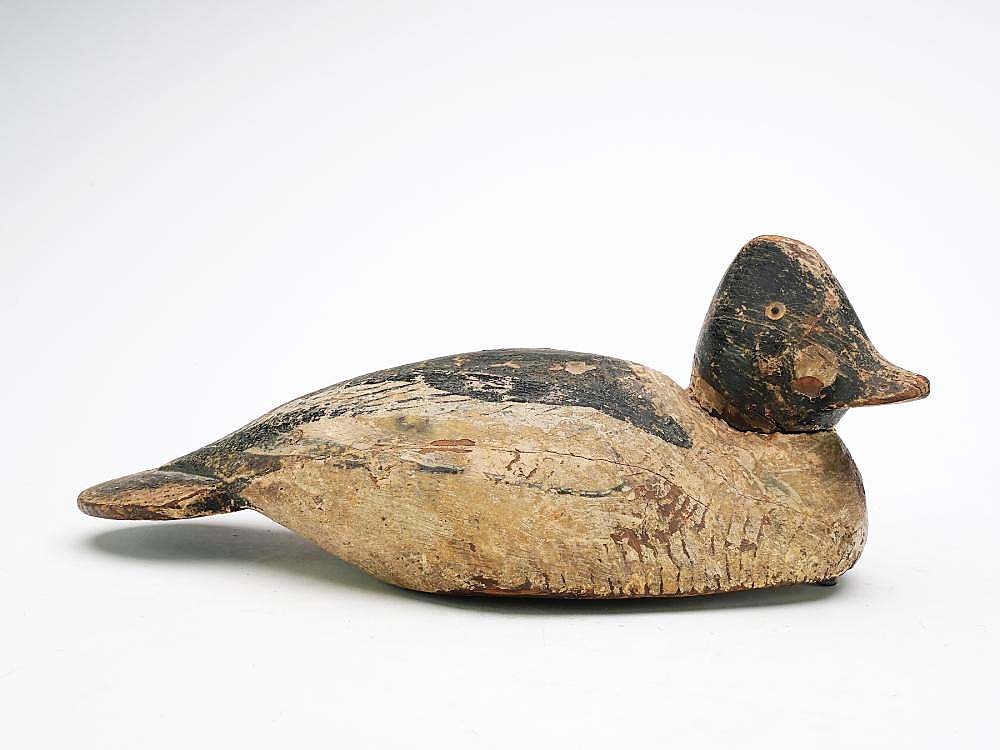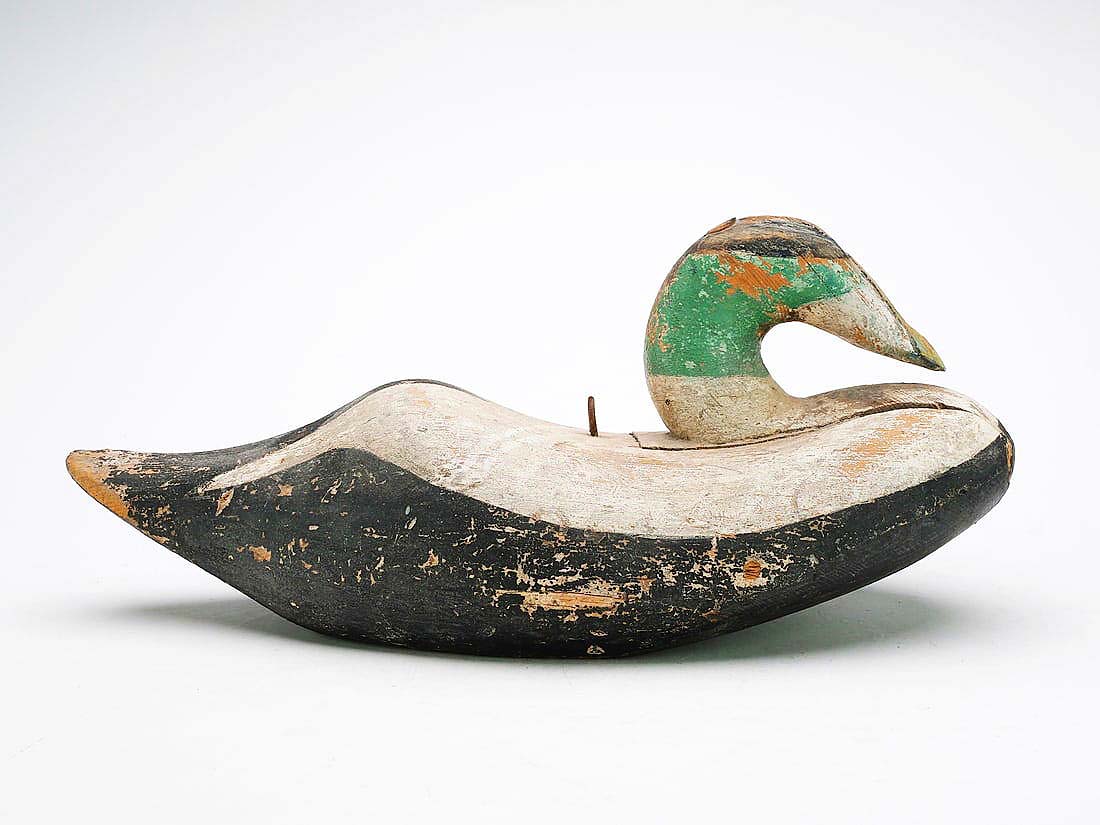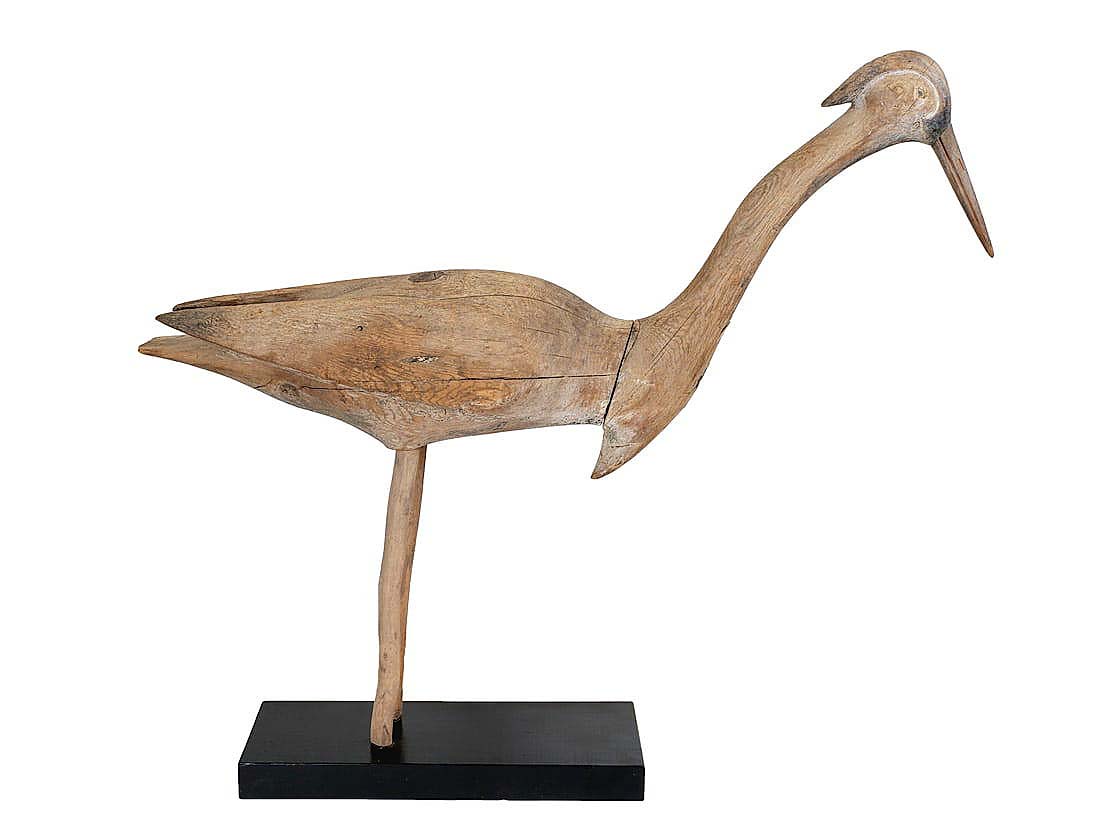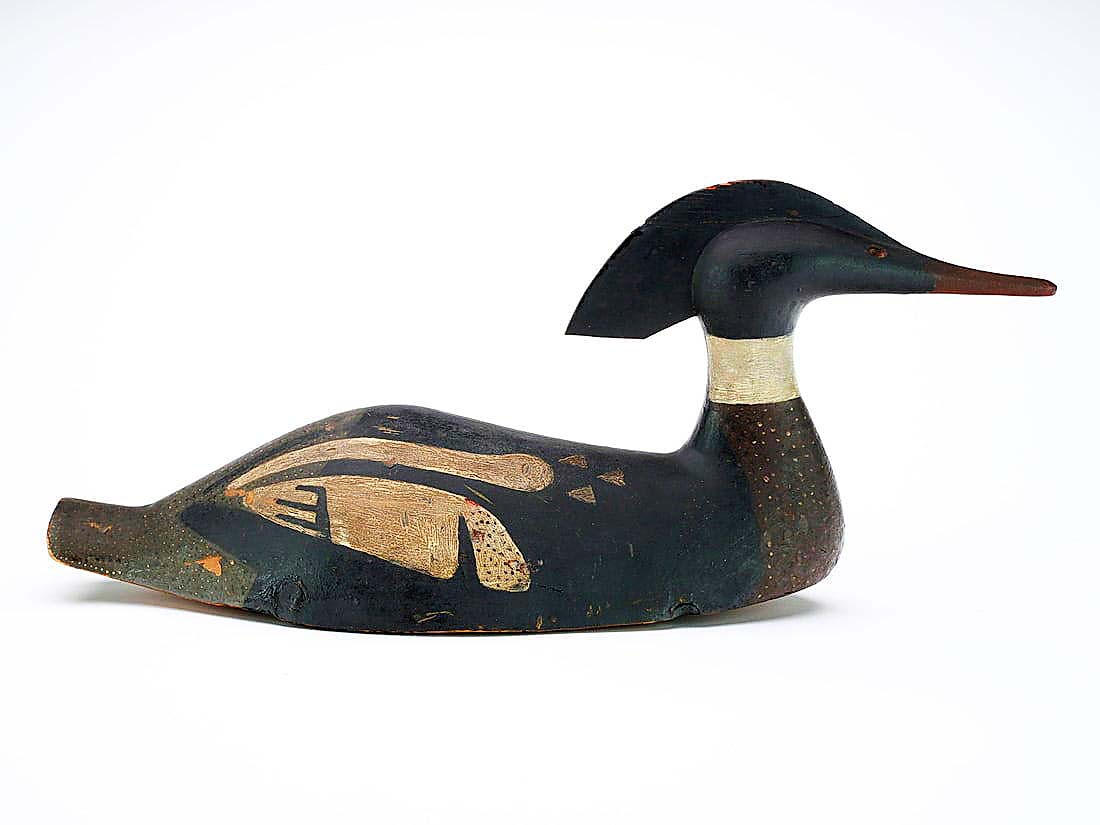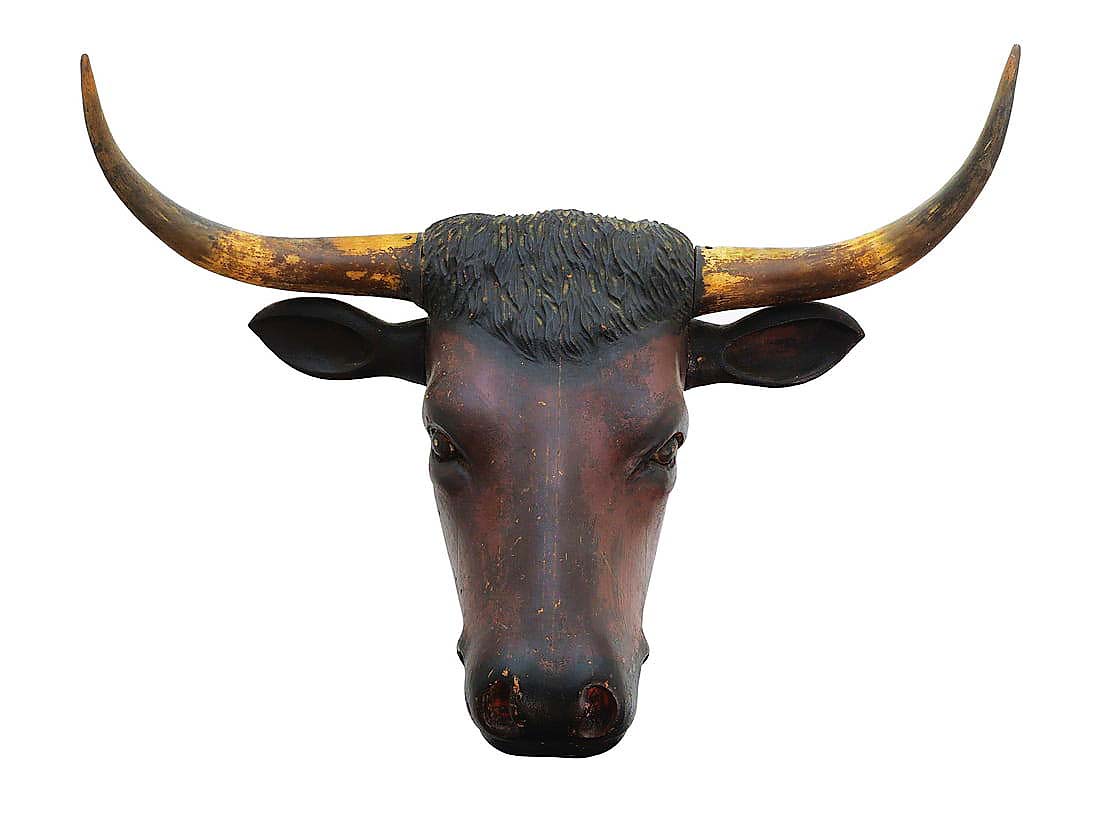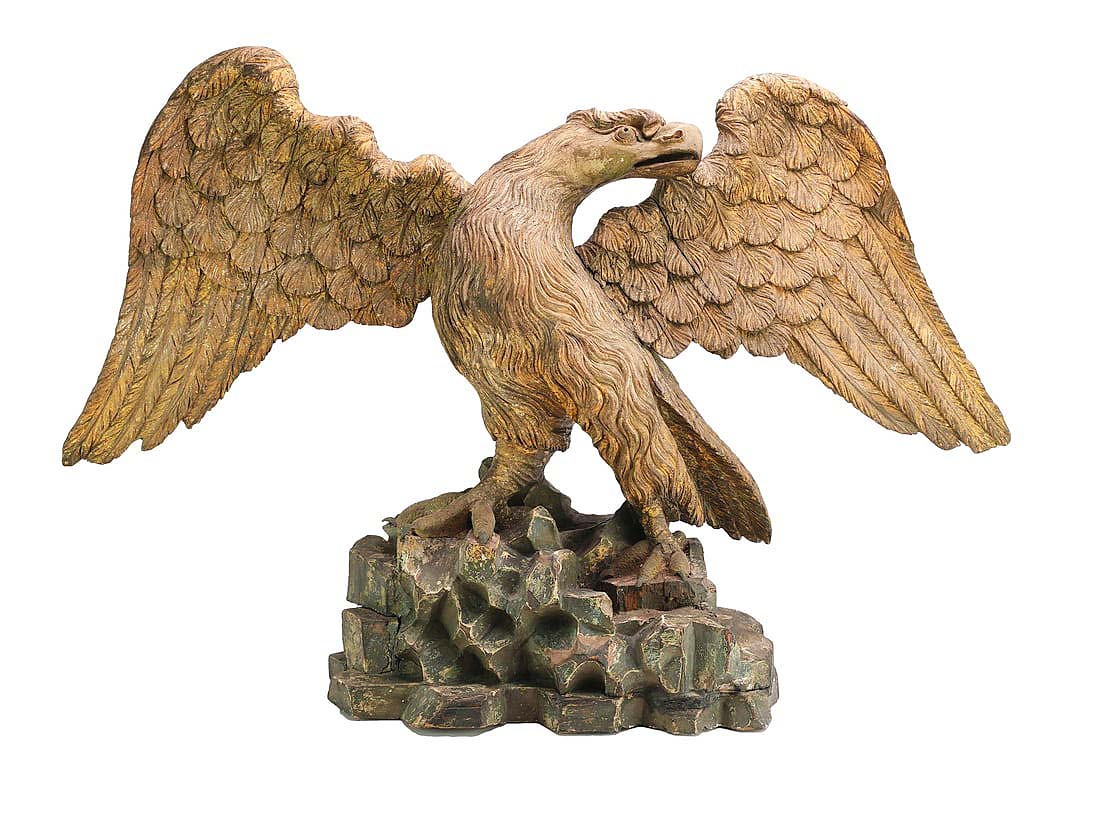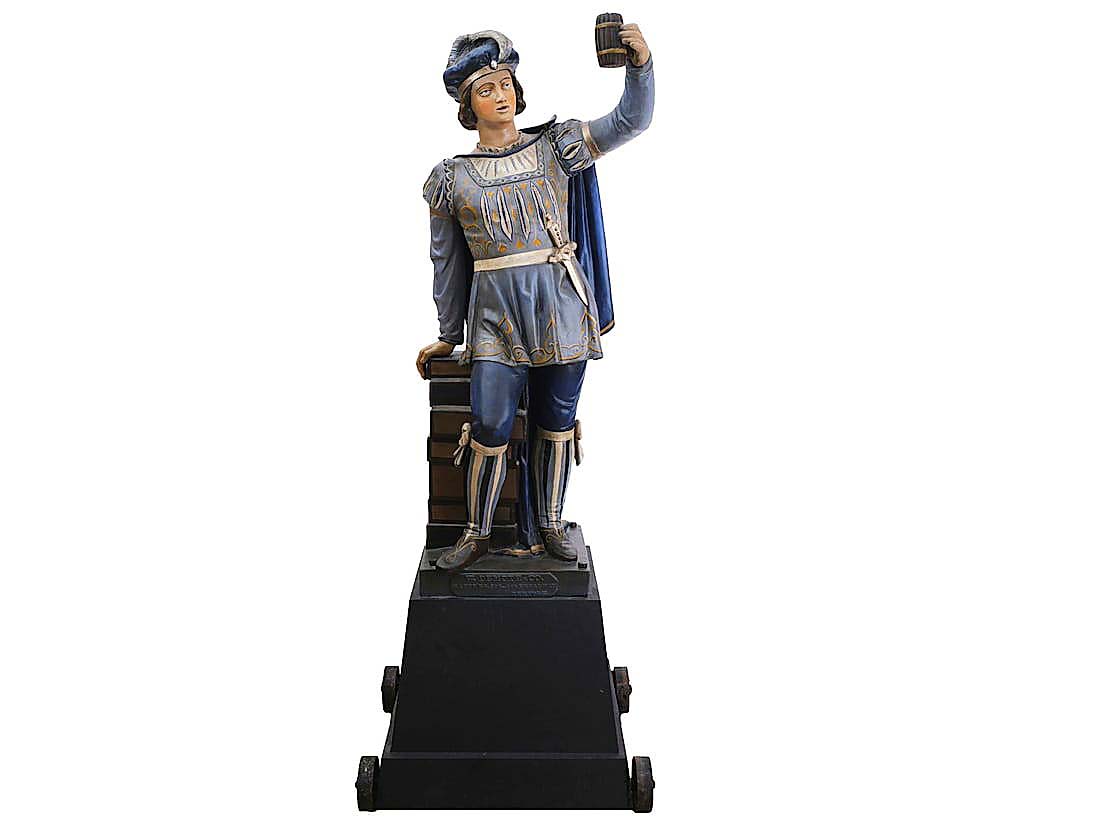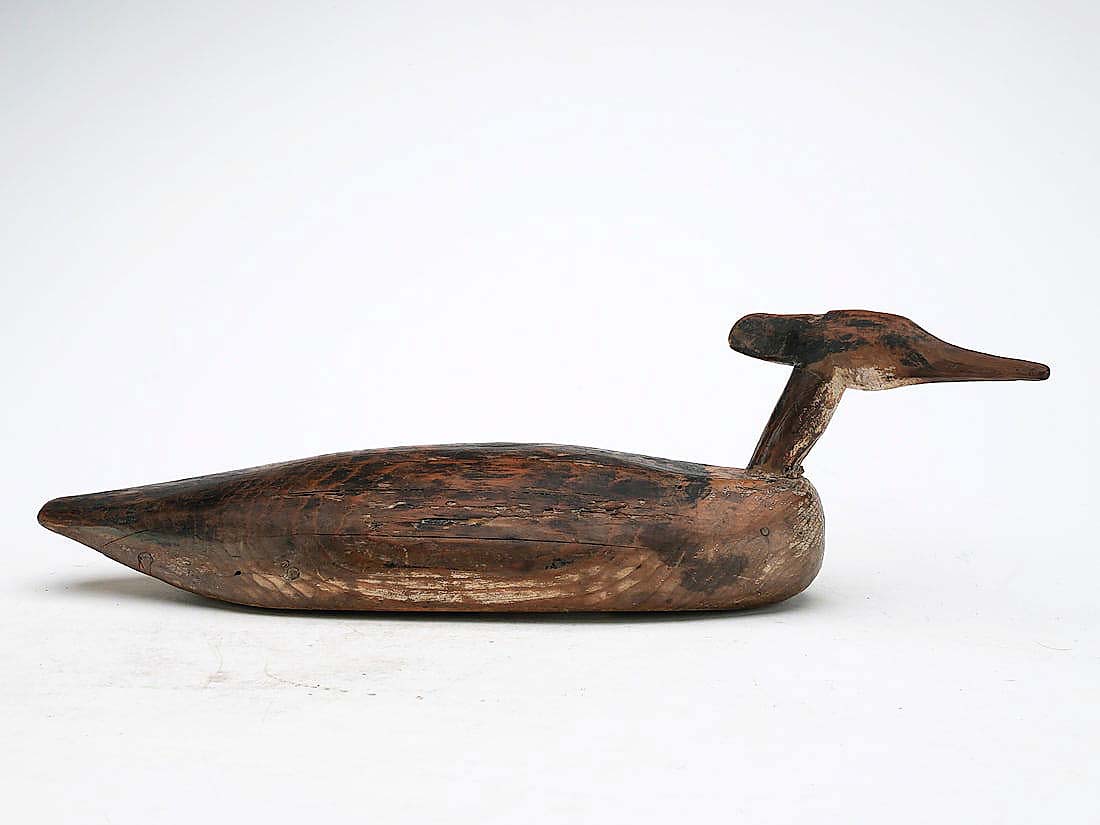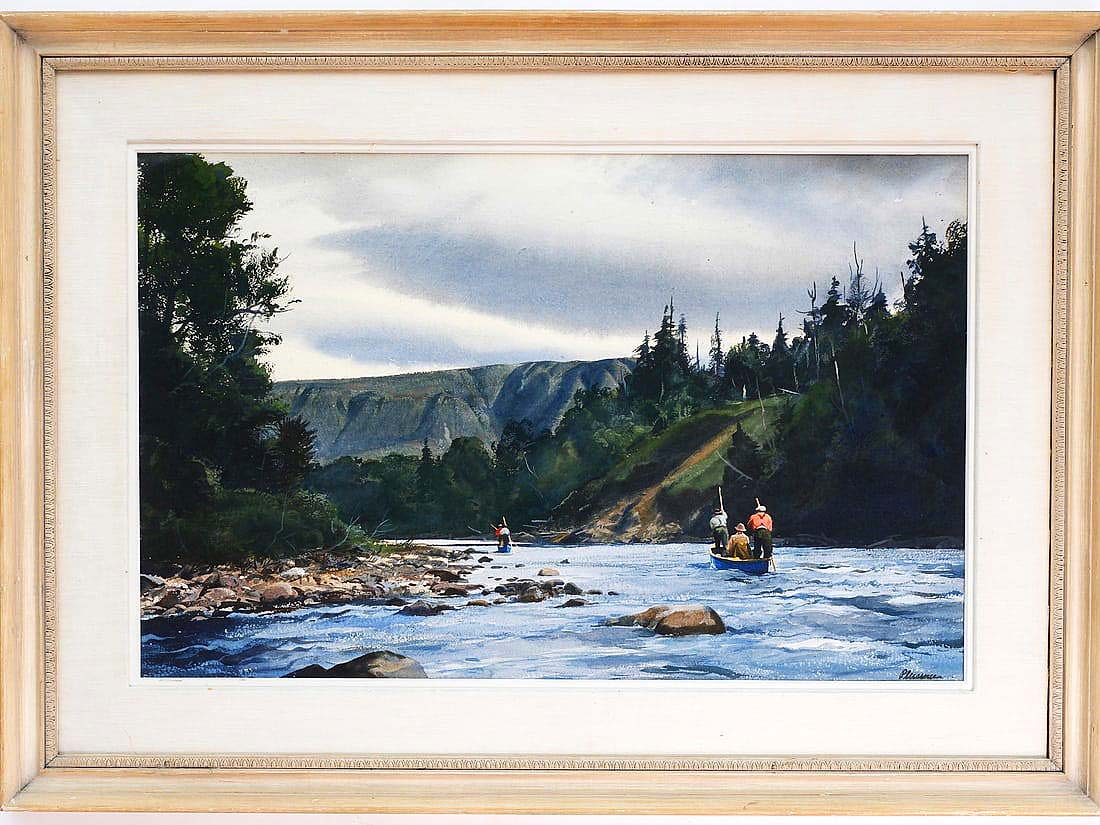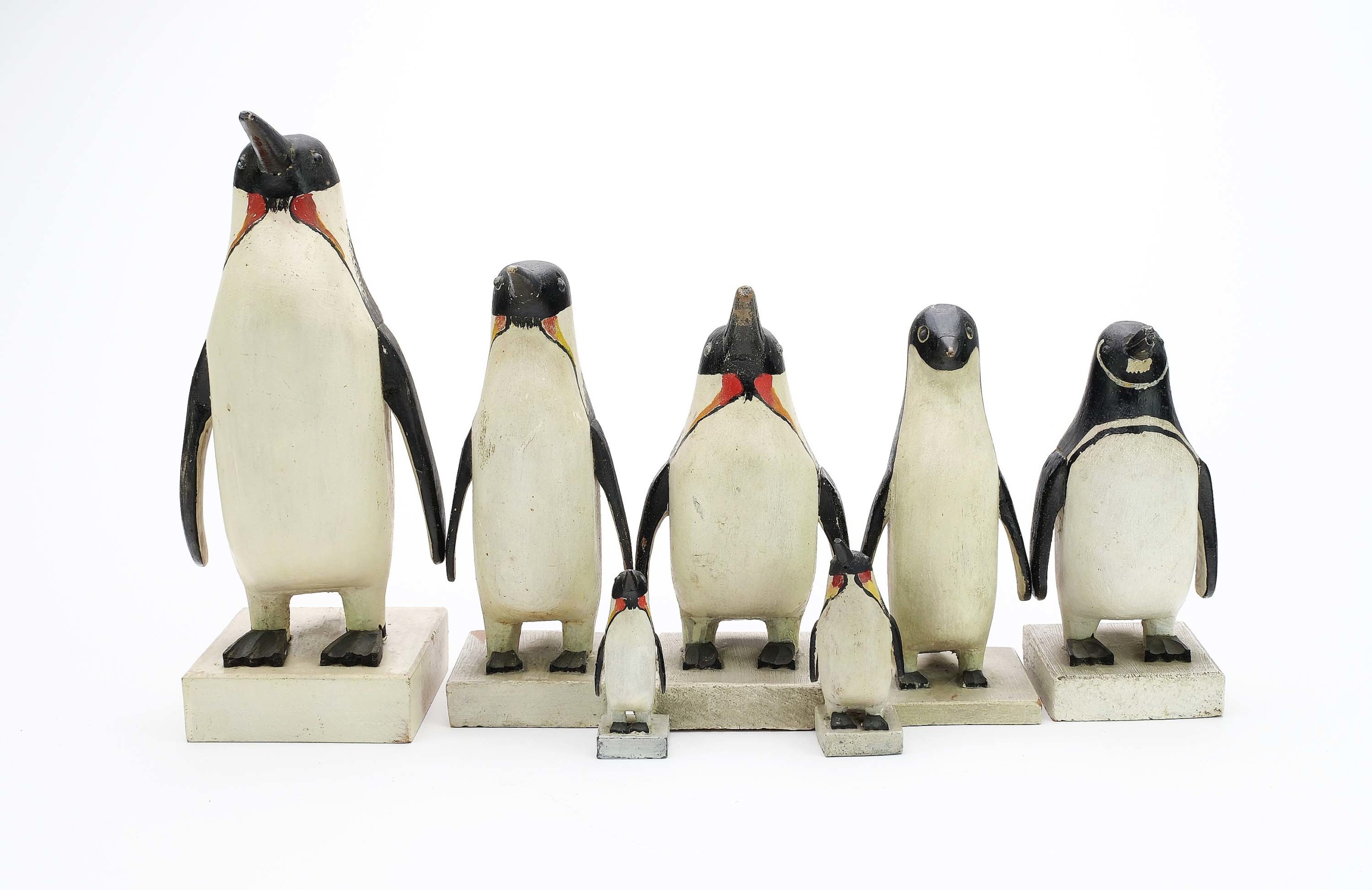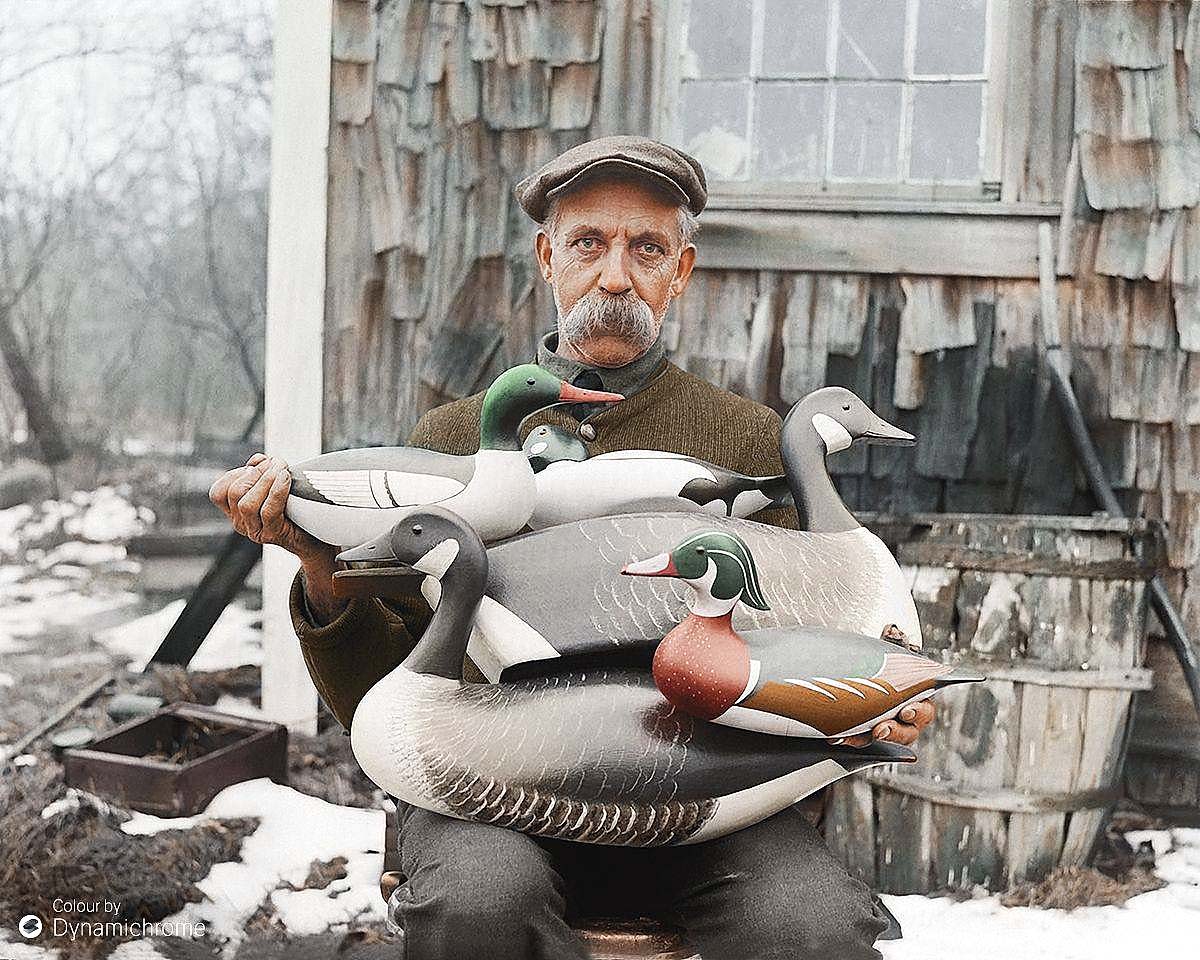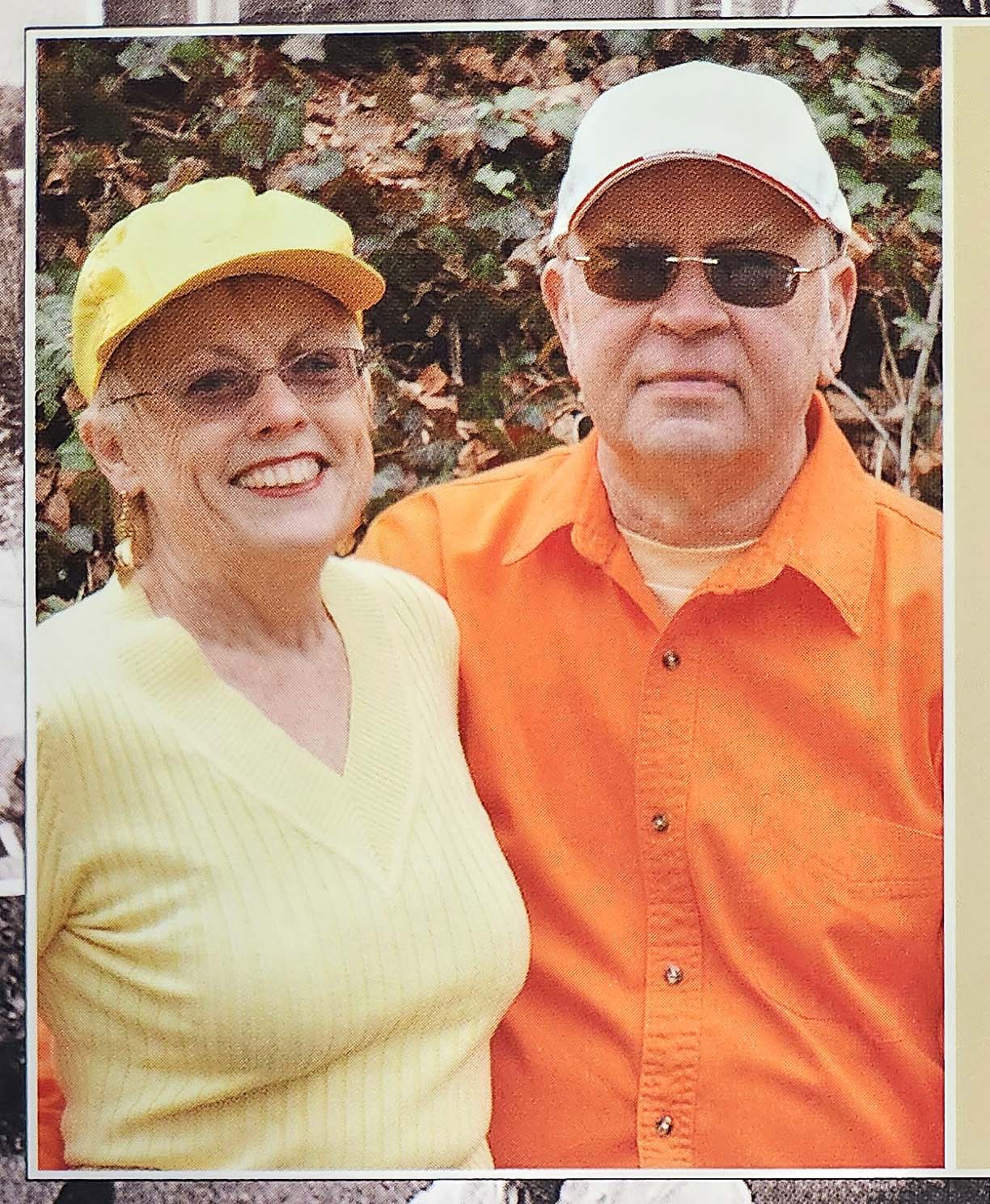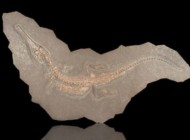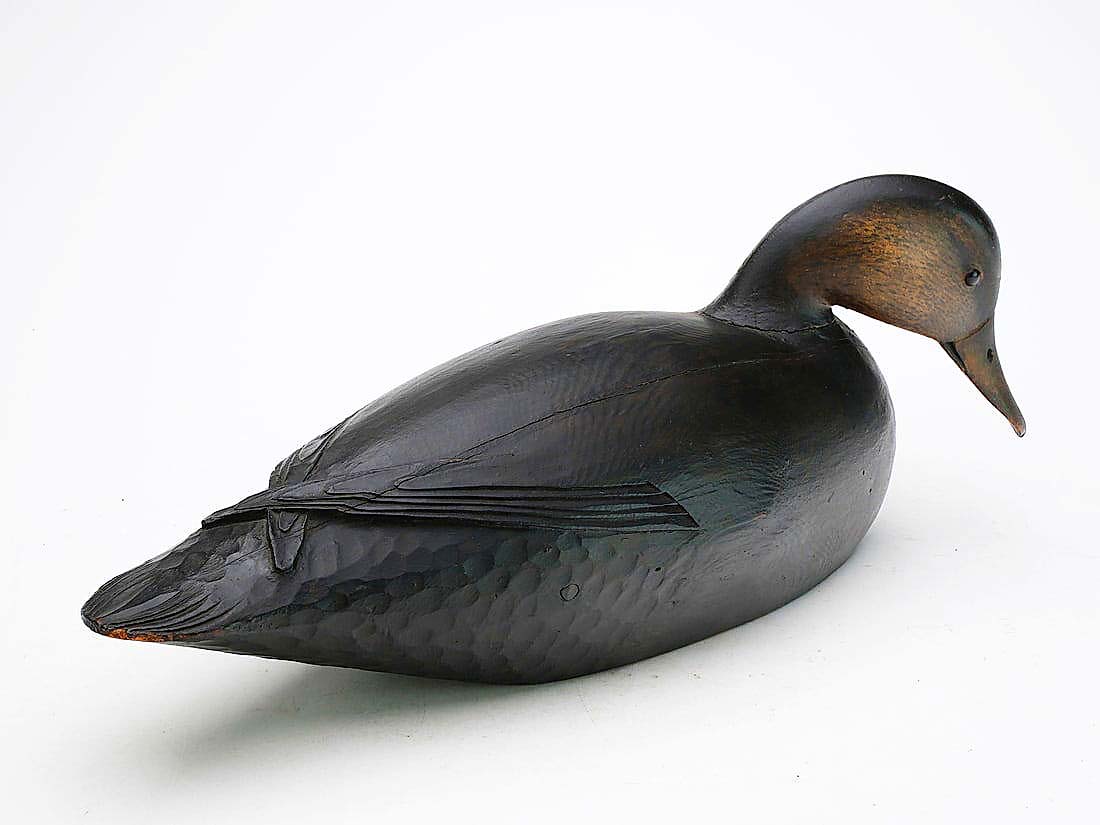
Finishing at $258,000 and leading the sale was this feeding black duck by Elmer Crowell, his only known example with a down-turned head. Of additional interest were its carved wing-tips and chip carving on the breast and tail.
Review by Rick Russack
EASTON, MD. — The July 25-26 auction at Guyette & Deeter featured the second part of the Alan and Elaine Haid collection of decoys, along with decoys and folk art from the Gene and Linda Kangas collection and Oscar Peterson carvings from the Dave Fannon collection. There were numerous carvings by Elmer Crowell, the Ward Brothers, Gus Wilson, Joe Lincoln and many others, as well as contemporary carvings and Mason Factory decoys. Shorebirds, sinkbox decoys and cigar store trade figures were also included. The indexed 367-page catalog had dozens of biographies of carvers, as well as information on the collectors and stories behind duck hunting; much of which was not available in the online catalog.
Six decoys each sold for more than $100,000, while more than 85 others achieved prices exceeding $10,000. The sale grossed more than $4.9 million with the highest-priced lot, a black duck by Elmer Crowell, selling for $258,000. A world record price of $66,000 was achieved for an elaborately carved storage box made by Frank Finney. Decoy specialist and folk art dealer, Russ Goldberger commented on the sale, saying, “It certainly demonstrated the strength of the market with a lot of new collectors entering the market. With the decoy sale earlier this month (covered in the August 2 issue of Antiques and The Arts Weekly), there have been close to $7 million worth of decoys sold in the month of July. That says something.”
There were between 150 and 200 people at the preview party the evening before the sale and more than 100 were in the gallery as the auction began the following day. Many stayed the whole day and were active bidders. Two food trucks onsite provided complimentary lunch for those in attendance.
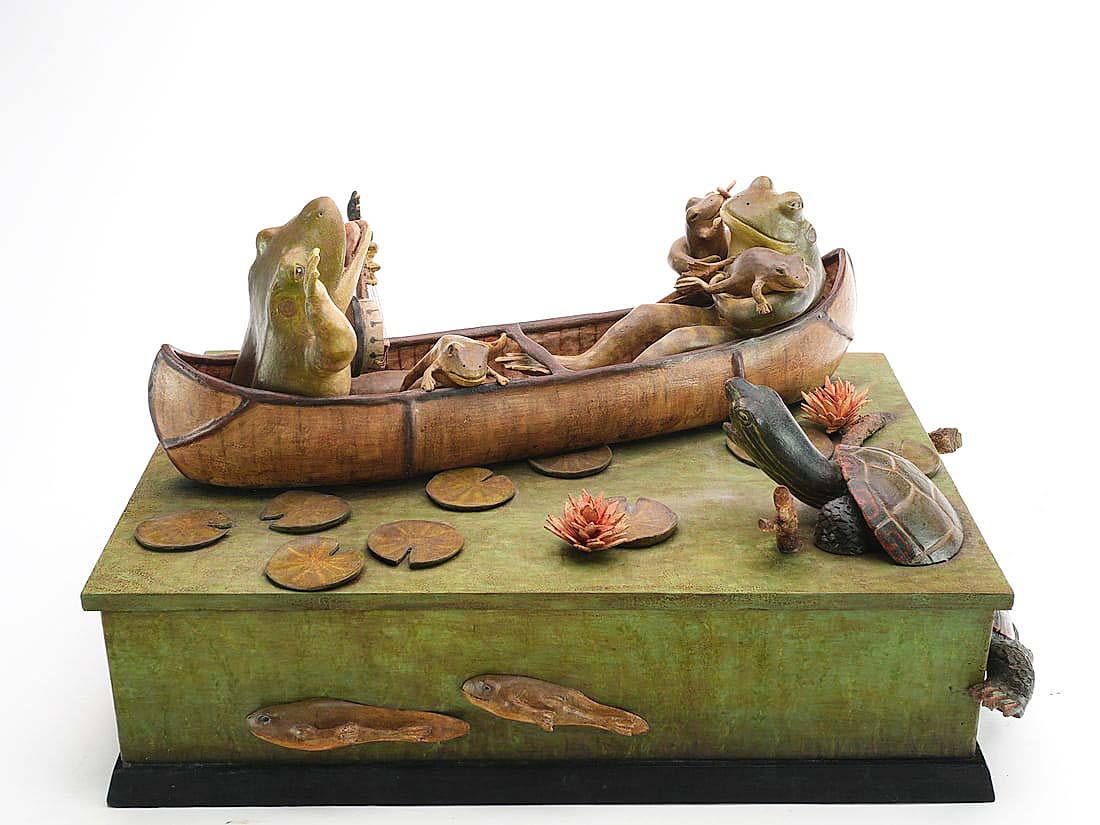
This carved storage box by contemporary folk artist Frank Finney set a new world record price for the carver when it earned $66,000. It measured 12 inches tall and 20 inches in width.
The late Alan and Elaine Haid started collecting together in 1967. Their aim was to acquire the rarest and finest examples of waterfowl decoys they could find. Alan Haid wrote two books on decoys, Decoys of the Mississippi Flyway (Schiffer Publishing Limited) in 1981 and, in 1993, he coauthored with Russ Goldberger, Mason Decoys: A Complete Pictorial Guide (Decoy Magazine); an updated edition was published in 2014. Guyette & Deeter sold 60 lots and the first part of the Haid collection, in the firm’s April 2024 auction, which totaled $3.8 million.
Gene and Linda Kangas began researching and writing about decoys in 1969, authoring more than 200 essays and five reference books on the subject. According to Jon Deeter, the Kangases “regarded decoys as folk art and were often more interested in form than paint. Their collection includes many other pieces of folk art, several of which are in this sale, and we’ll be including more items from their collections in upcoming sales.”
Dave Fannon’s collection of Oscar Peterson objects are the result of a three-decade pursuit of his finest fish plaques, vases and decoys. Many of the pieces had never been offered before at public auction.
It wasn’t a surprise that five of the six highest priced items in the sale were achieved by decoys from the Haid collection. The 55 lots in this sale realized a total of $2,184,000. The printed catalog devoted 106 pages to their collection, and the firm’s website included a video of the couple discussing their collection.
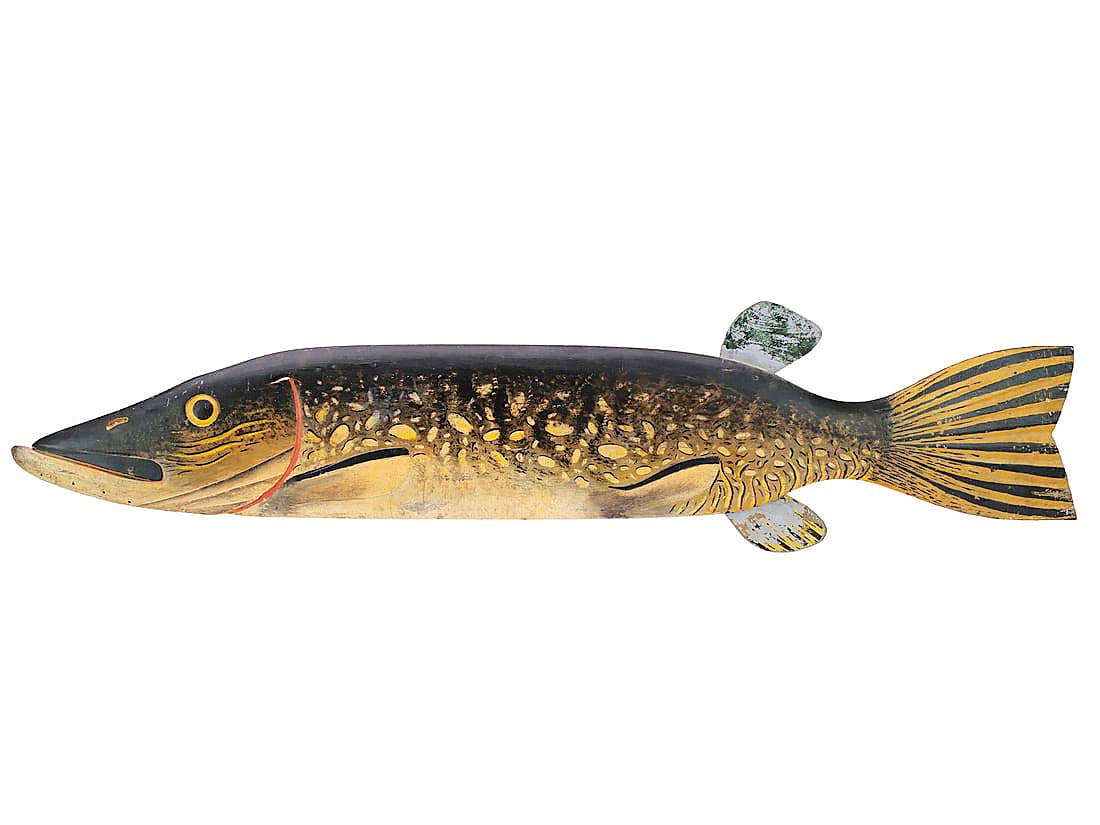
Oscar Peterson often traded his carvings for drinks at local taverns. While it isn’t known who made this 48-inch double-sided pike trade sign from the Haid collection, bidders chased it to $42,000.
Three of the six Haid collection decoys that exceeded $100,000 were made by Cape Cod carver Elmer Crowell (1862-1951), including the sale’s top lot. A phone bidder paid $258,000 for his feeding black duck with a slightly turned head in a downward looking pose. The catalog stated that this may be the only one known with its head in this position. The duck had relief feather carvings on the raised wing-tips and tail feathers along with time-consuming chip carvings on the breast and tail area.
The second-highest price of the sale was a green wing teal drake by Crowell that earned $168,000. It had a slightly turned head and relief-carved crossed wing-tips and tail feathers. One of Crowell’s shore birds, a yellowlegs in a feeding pose with relief carved primary feathers, earned $105,000.
A red-breasted merganser, made by Captain Edwin Bachman (Nova Scotia, 1872-1917), that was found in a Nova Scotia home brought $156,000. This decoy was unusual in that it had carved eyes and an oversized carved crest. Most often, crests are carved separately and inserted into the head; in this instance, the head and crest were carved from one piece of wood. The remaining two six-figure lots from the Haid collection were a rare pair of mallards, showing the hen in a preening pose. The pair was made by Illinois carver Charles Perdew (1874-1963), painted by his wife, Edna, and brought $120,000. An outstanding hollow-carved working swan decoy, made by Charles Birch (1867-1956) of Willis Wharf, Va., brought $108,000.
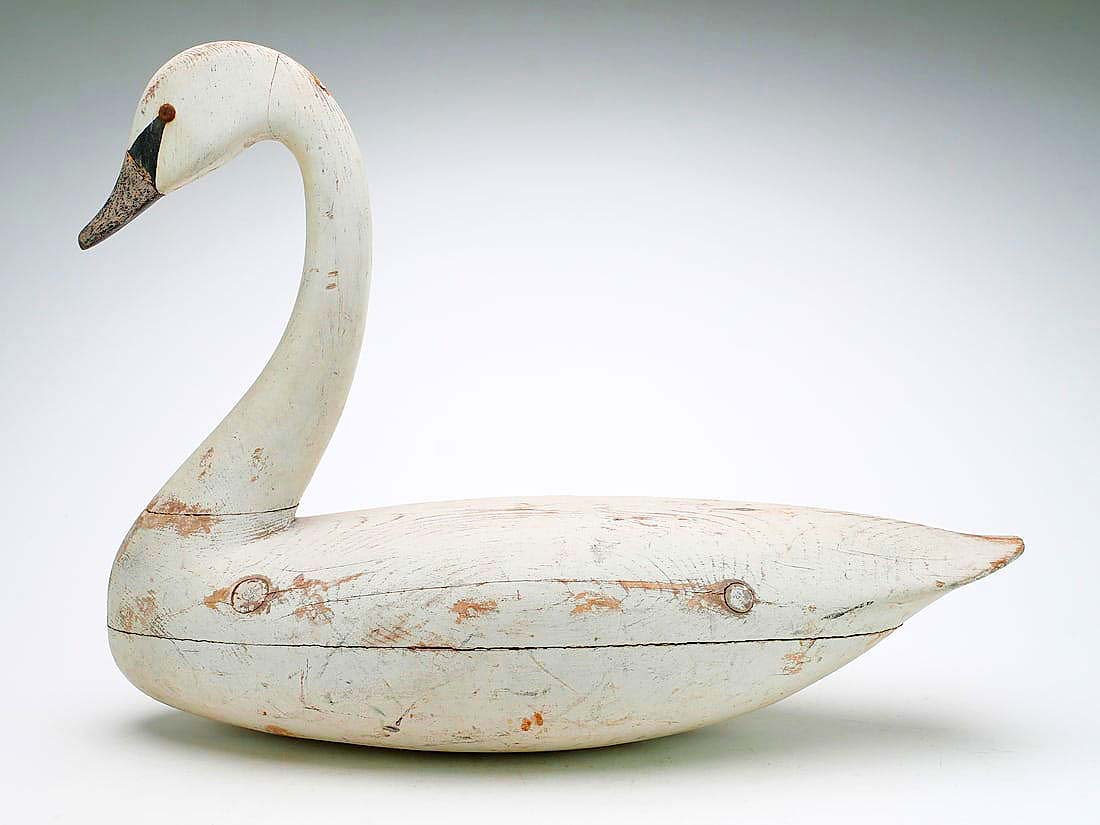
Phone lines were active when this Charles Birch (Virginia, 1867-1956) working swan decoy from the Haid collection was offered. One of those bidders won it for $108,000.
A special-order curlew topped selections made by the Mason Decoy Factory. It had been modeled after curlews carved by William Bowman on Long Island, showing deep relief-carved wings and raised wing-tips. It sold for $63,000. Working decoys by other well-known masters of the craft were in abundance and also did well. A turned-head mallard hen by Illinois carver Robert Elliston (1847-1925) realized $90,000. The same price was achieved for a rigmate pair of red-breasted mergansers with slightly turned heads by George Boyd (1873-1941), who is considered by many to be New Hampshire’s premier decoy maker. The pair had provenance to the Bert and Nina Flectcher Little collection.
One of New Jersey’s premier carvers was Harry Shourds (1861-1920); his rare, red-breasted merganser drake — hollow carved with tack eyes and extended crest feathers — earned $75,000. The Cobb family of Cobb Island produced some of the finest carvings in Virginia. A swimming brant with raised wing-tip carving by Nathan Cobb Jr (1825-1905) brought $66,000. Obediah Verity (1813-1901) produced some of Long Island’s finest shorebird decoys. His large curlew with deep relief wing carving and carved eyes sold for $63,000. All of these mentioned were from Alan and Elaine Haid, illustrating the breadth of their collection.
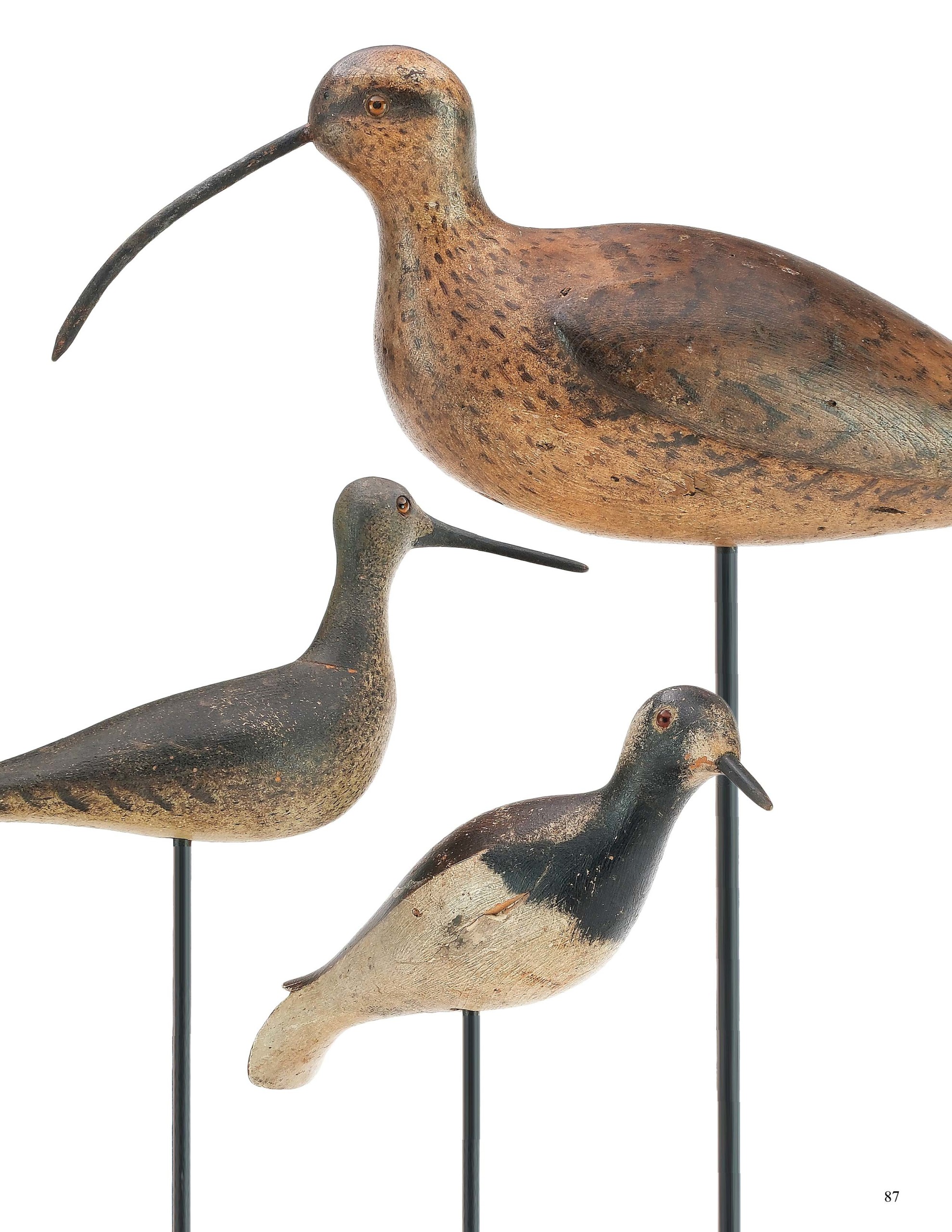
These three shorebird decoys were made by the Mason Decoy Factory (Detroit, Mich.). The large special-order curlew on the right earned $63,000, the wooden billed snipe on the left achieved $45,000 and the split tail ruddy turnstone with glass eyes realized $8,100.
Carvings by contemporary craftsmen have a large and growing following. The sale included several decorative carvings by Mark McNair of Crooksville, Va. Born in 1950, McNair is the only living carver whose works are included in the collection of the Shelburne Museum (Shelburne, Vt.). The highest spent for one of McNair’s carvings was $14,400 on an unusual weathervane he’d made in 2012. It took the form of a 32-inch-long swordfish, signed and dated, with relief gill, eye carving and a tail that revolved in the wind. A 24-inch-long hollow-carved Canada goose — with a slightly turned head and relief carved wing-tips — sold for $4,500. A merganser with relief carved wing-tips and an extended crest made $3,900. Of the eight brants made by Jim Schmiedlin (1945-2015), only one earned $15,000. A carved sculpture titled “Early Morning Glory” depicted a pair of flying ruby-throated hummingbirds approaching morning glory flowers. Signed and dated “2010,” it had been made by Steve Weaver (b 1950) and went out for $9,600.
There were also several carvings by contemporary folk artist Frank Finney (b 1947). Painted in Finney’s distinctive colors, an imaginative storage box highlighting a family of frogs canoeing on a pond sold for $66,000; this set the new world auction record for a carving by him. Bringing $21,600 was a life-size bobcat with a full-size quail in its mouth. The quail was painted with individual feather carvings and was removable from the bobcat’s mouth. For those with a smaller budget, miniature bird carvings by Finney could be taken home for less than $600.
From Crisfield, Md., and the Ward Brothers was a circa 1930 pinch-breast pintail hen with a raised and slightly turned head that flew to $69,000. It had provenance to the collection of James and Lyda Madden, as well as a 1982 auction with Richard Bourne.
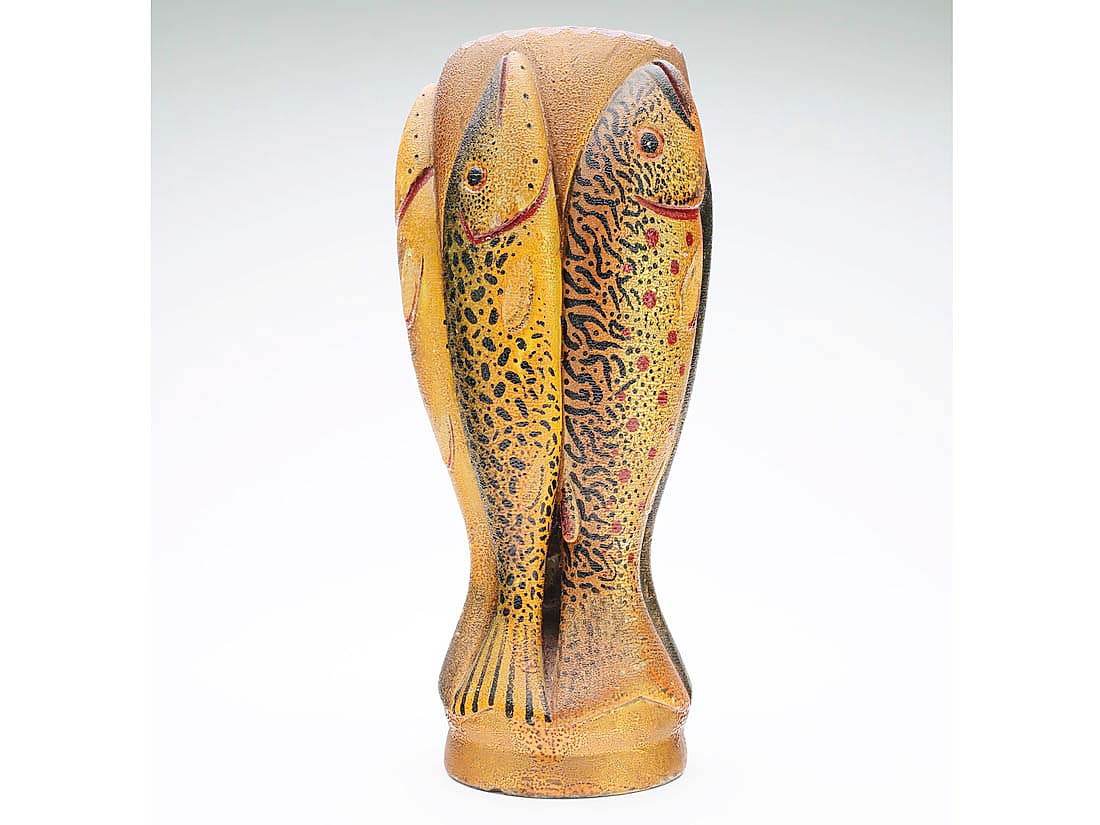
The Fannon collection included two carved vases by Oscar Peterson. This one depicted five species of fish and sold for $24,000.
Among the Oscar Peterson (1887-1951) fish carvings and decoys from the Fannon collection, two vases — heavily carved with fish — were the most popular with bidders. A 9½-inch-tall example depicted five species of fish and earned $24,000. Bringing the same price was a slightly smaller vase carved with a muskie. Peterson’s ice fishing decoys ranged in price from $840 to $8,400; the latter made on an 11-inch walleye with unpainted copper fins.
There were about 40 items from the Gene and Linda Kangas collections that reflected their interest in folk art. A preening surf scoter made by Gus Wilson (1864-1950), had relief-carved wings and minor gunning wear; it earned $28,800. Wilson’s great blue heron decoy, from another collection, was also folky and had an old, weathered surface; it flew to $33,000.
After the sale, Jon Deeter said, simply, “What’s there to say? It was a great sale.”
Prices quoted include the buyer’s premium as reported by the auction house.
For information, 410-745-0485 or www.guyetteanddeeter.com.
